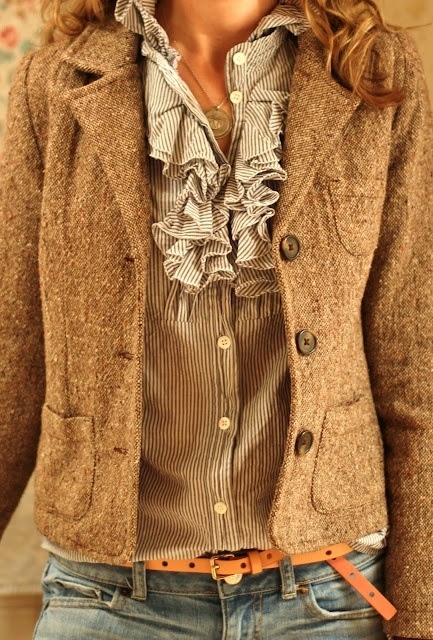Lectura de sambata dimineata
„What is it for a person to be cool? We use the word „cool” in a variety of ways: to indicate a low temperature, to signal general approval or to describe an emotional state or person’s temperament. Additionally, some people use the word „cool” a if it were synonymous with „fashionable”, and thus would claim that something s being cool is a matter of its being approved of by the relevant group. Yet it would be aesthetically naive to think that a person can count as cool merely in virtue of doing and wearing what is fashionable.
Of course, there are soe similarities between being cool, in this sense, and being fashionable. Being cool, like being fashionable, involves choosing to wear and to do certain things. Being cool, like being fashionable, is typically admired, at least by those who are in the know, and is taken by the cognoscenti as grounds for social acceptance.
But cool people are not slaves to fashion. They have the confidence to break boundaries and wear whatever they want, and the skill that allows them to look great while doing so. Most importantly, the cool person seems not to have to try to be cool. Her cool appears so easy as to be effortless. It is one’s clearly visible effort to conform to the norm of fashion and her fear of being judged unfashionable, that render a person uncool.” – Luke Russell, „Tryhards, fashion victims and efortless cool”
Astea fiind spuse, astazi va invit sa va imbracati uncool dar sa aveti ochelari de soare, sa mergeti in locuri uncool (cum ar fi… acasa la parinti sau in piata) si sa va bucurati de ultimele zile calde si aurii ca o paine. Daca aveti chef si timp, cititi unele din articolele de mai jos, dar reveniti luni – incep un concurs cu adevarat cool 🙂
Italy today: creative flow vs cash flow – “The big labels packed up their logo luggage and sprinted for Asia a while ago now, relying on a more robust market to support a frenzy of new store openings and to buoy their balance sheets. That leaves the little guys — small, young, independent Italian fashion brands with no mono-brand stores of their own — to struggle along.” In International Herald Tribune.
The Empress’s new clothes – „Fashion editor Diana Vreeland is recalled in a film that captures how she thought things ought to be in the world of Vogue.” In Financial Times.
Sexy and practical: can Gucci revive fashion’s fortunes? – “In the wake of poor results across the sector and a forecast 5.6 per cent drop in revenues among the high-end Italian labels, creative director Frida Giannini will be hoping her spring 2013 offering will appeal especially to wealthy clients across the Far East and in developing markets such as India.” In Independent.
The internet has created a new industrial revolution – “The past 10 years have been about discovering new ways to work together and offer services on the web. The next 10 years will, I believe, be about applying those lessons to the real world. It means that the future doesn’t just belong to internet businesses founded on virtual principles. but to ones that are firmly rooted in the physical world.” In The Guardian.
Scott Schuman on the street style backlash – “I don’t really care where these people get their clothes from, it doesn’t matter to me, it isn’t going to matter 100 years from now. A good shot is a good shot. That’s all I really care about.” In Fashionista.
Dances with woolens – „Actress Tilda Swinton stars in a rare sartorial showcase featuring pieces from the Musée Galliera’s historic collection.” In Financial Times.
Halston design house gets major alteration under new owner – “The storied New York design house Halston once dressed celebrities the likes of Elizabeth Taylor, Bianca Jagger andLiza Minnelli. Its founder, Roy Halston, partied with Andy Warhol at Studio 54 and designed Jackie Kennedy’s famous pillbox hat. But after decades of corporate turmoil, the label that once epitomized 1970s glamour in the Big Apple is getting a West Coast makeover.” In L.A. Times.
Prada bares her soul – “In the most personal and soulful collection she has ever done at Prada , Miuccia Prada opened her womanly heart, using that most female of symbols, the flower, but in a powerful, modern way.” In NY Times.
Excess all areas – „Opulent costume jewellery – where making a statement matters more than precious gems – is having a fashion moment at the high end, too. At this season’s shows, numerous editors and stylists wore crystal confections by “It” brands, such as Shourouk and Assad Mounser.” In Financial Times.
Made in Italy tag lures EM consumers – “In the stagnant Italian economy, one sector is still soaring: luxury manufacturing. Its health is a result of a strategy that involves both promoting the ‘Made in Italy’ label and companies ‘structuring themselves to rival those countries that are advantaged by lower labour costs’, according to Alessandro Varisco, chief executive of Moschino.” In Financial Times.
Minimalist matters – “Jil Sander is the archetypal figure to have reinterpreted mid-century Modernism. Her fashion life has been dedicated to streamlining style and to recognizing the dynamic place of women in society. But where should the designer take that vision now that she has returned to her own label after eight years and a series of stop-go comebacks?” In NY Times.











Comentarii despre acest post